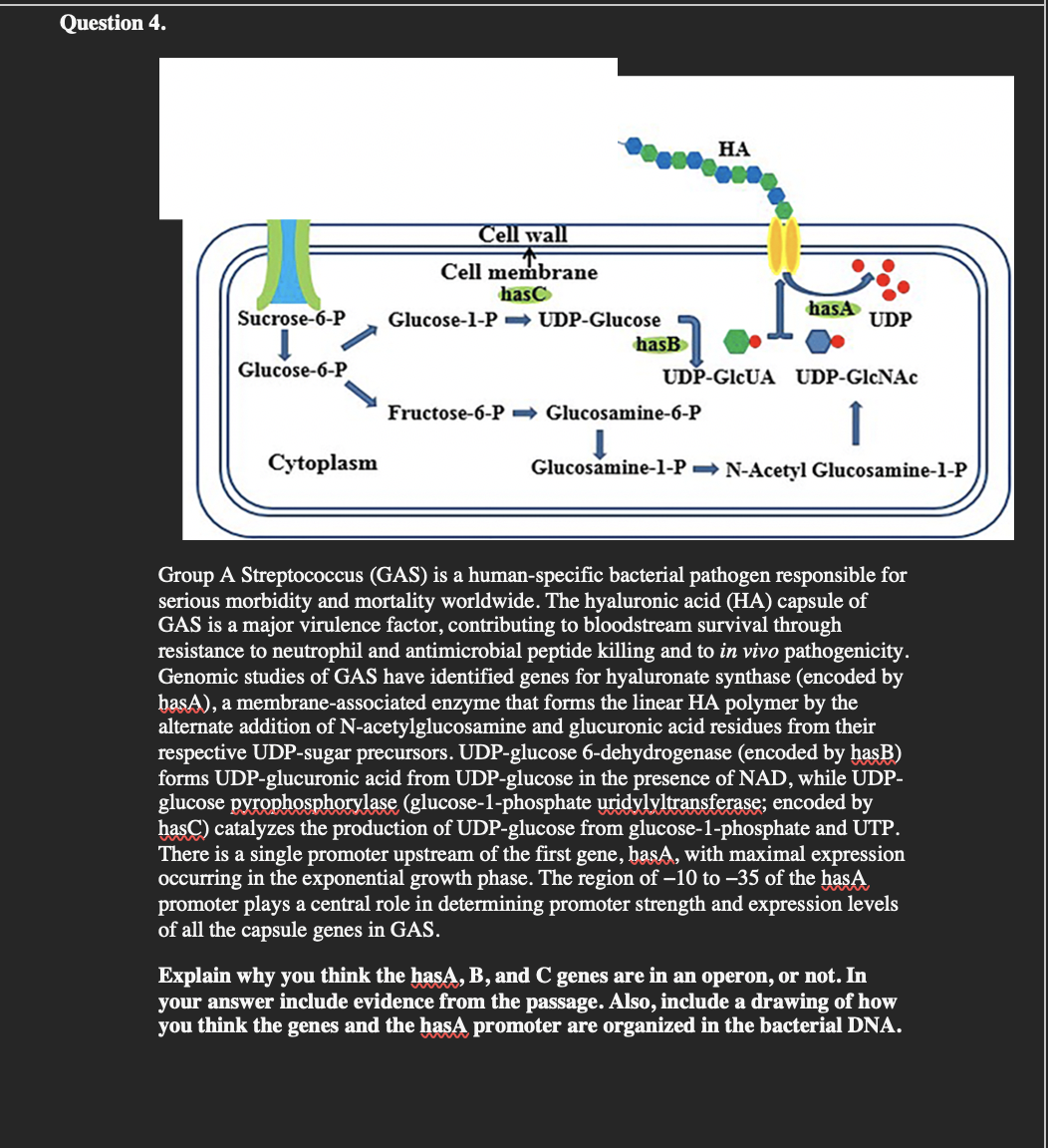Sucrose-6-P Glucose-6-P Cytoplasm Cell wall Cell membrane hasC Glucose-1-PUDP-Glucose hasB HA Fructose-6-P➡ Glucosamine-6-P ↓ hasA UDP UDP-GlcUA UDP-GlcNAc 1 Glucosamine-1-PN-Acetyl Glucosamine-1-P Group A Streptococcus (GAS) is a human-specific bacterial pathogen responsible for serious morbidity and mortality worldwide. The hyaluronic acid (HA) capsule of GAS is a major virulence factor, contributing to bloodstream survival through resistance to neutrophil and antimicrobial peptide killing and to in vivo pathogenicity. Genomic studies of GAS have identified genes for hyaluronate synthase (encoded by basA), a membrane-associated enzyme that forms the linear HA polymer by the alternate addition of N-acetylglucosamine and glucuronic acid residues from their respective UDP-sugar precursors. UDP-glucose 6-dehydrogenase (encoded by hasB) forms UDP-glucuronic acid from UDP-glucose in the presence of NAD, while UDP- glucose pyrophosphorylase (glucose-1-phosphate uridylyltransferase; encoded by hasC) catalyzes the production of UDP-glucose from glucose-1-phosphate and UTP. There is a single promoter upstream of the first gene, basA, with maximal expression occurring in the exponential growth phase. The region of -10 to -35 of the hasA promoter plays a central role in determining promoter strength and expression levels of all the capsule genes in GAS. Explain why you think the hasA, B, and C genes are in an operon, or not. In your answer include evidence from the passage. Also, include a drawing of how you think the genes and the hasA promoter are organized in the bacterial DNA.
Nucleotides
It is an organic molecule made up of three basic components- a nitrogenous base, phosphate,and pentose sugar. The nucleotides are important for metabolic reactions andthe formation of DNA (deoxyribonucleic acid) and RNA (ribonucleic acid).
Nucleic Acids
Nucleic acids are essential biomolecules present in prokaryotic and eukaryotic cells and viruses. They carry the genetic information for the synthesis of proteins and cellular replication. The nucleic acids are of two types: deoxyribonucleic acid (DNA) and ribonucleic acid (RNA). The structure of all proteins and ultimately every biomolecule and cellular component is a product of information encoded in the sequence of nucleic acids. Parts of a DNA molecule containing the information needed to synthesize a protein or an RNA are genes. Nucleic acids can store and transmit genetic information from one generation to the next, fundamental to any life form.

Step by step
Solved in 2 steps with 1 images









